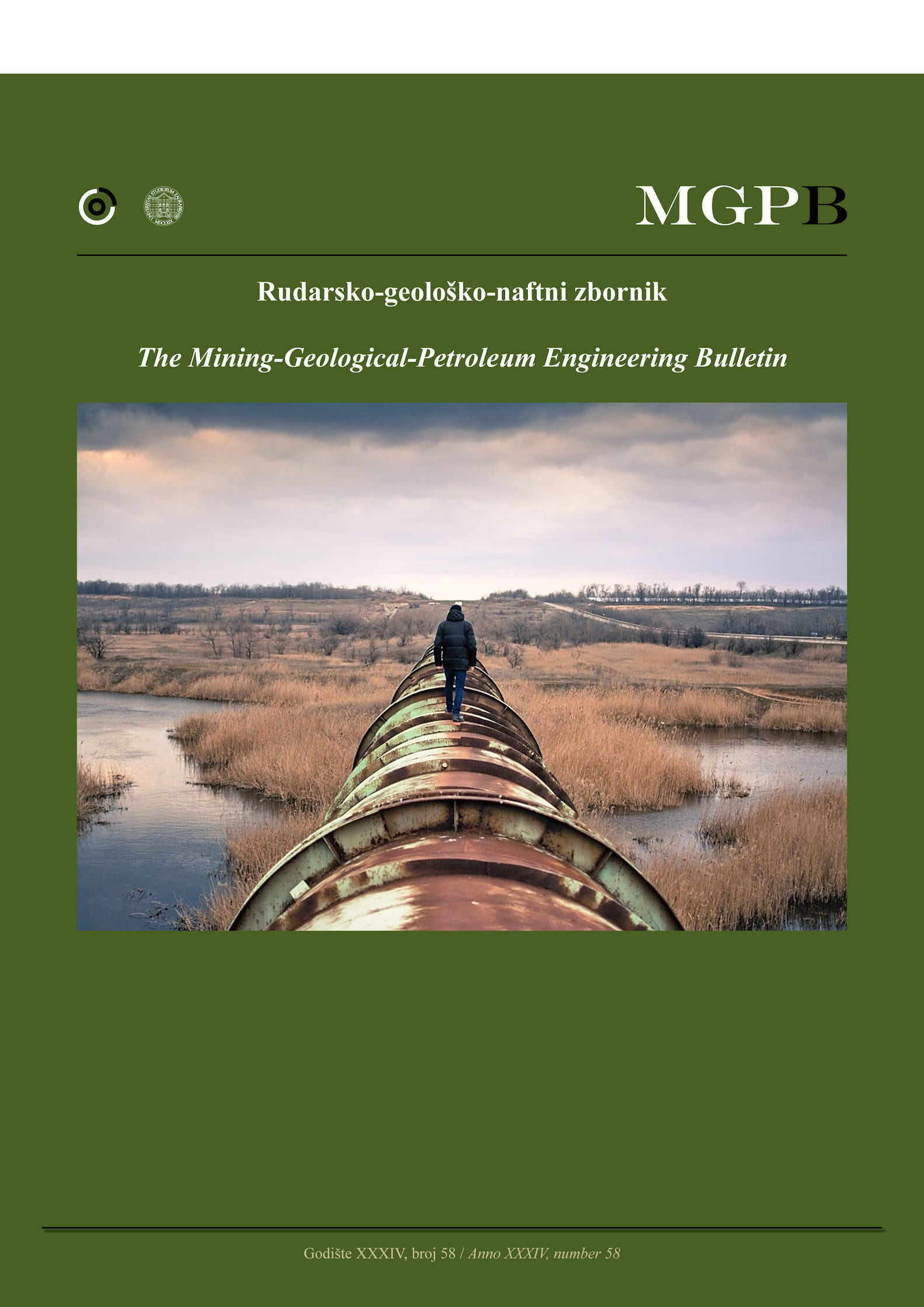Effects of a pillarless, center-out stoping pattern on haulage drift performance and ore tonnage at risk
DOI:
https://doi.org/10.17794/rgn.2022.2.8Keywords:
haulage drift stability, ore at risk, quantity of backfill, pillarless, centre-out-stoping system, yielding zoneAbstract
(e.g. pyramidal sequences) on the performance of mine haulage drifts (e.g. ore access units), the tonnage of unmined ore at risk, and the required quantity of fill material. Using RS2D software, a two-dimensional, elasto-plastic finite-element model for a haulage drift located at 1200m below the surface in the orebody’s footwall has been built. The spread of yielding zones into the rock mass around an access drift and unmined stopes is used to assess mine haulage drift stability and estimate the amount of unmined ore at risk owing to local mining activity. The findings are presented and discussed in terms of the size of failure zones, the number of tonnes of unmined blocks at risk, and the amount of backfill materials required, all in relation to the mining stage. The findings show that haulage drift stability is rapidly diminishing. The drift roof begins to deteriorate at an early stage (after mining step 3). In the drift roof, left wall, floor, and right wall, failure zones measured 1.55m (step 3), 2.28m (step 4), 2.57m (step 5) and 1.88m (step 5) accordingly. After mining step 4, there was a total of 905 m3 of unmined ore at risk (4100 tons), and after mining step 5, a total of 1500 m3 (30 tons) of back fill material was required to strengthen stopes.
Downloads
Published
How to Cite
Issue
Section
License
Copyright (c) 2021 authors and journal

This work is licensed under a Creative Commons Attribution 4.0 International License.
Creative Commons-BY
Authors who publish with this journal agree to the following terms:
In agreeing this form, you certify that:
- You read the ethical codex of the RGN zbornik available at journal web.
- You submitted work is your original work, and has not previously been published and does not include any form of plagiarism.
- You own copyright in the submitted work, and are therefore permitted to assign the licence to publish to RGN zbornik.
- Your submitted work contains no violation of any existing copyright or other third party right or any material of an obscene, libellous or otherwise unlawful nature.
- You have obtained permission for and acknowledged the source of any illustrations, diagrams or other material included in the work of which you are not the copyright owner.
- You have taken due care to ensure the accuracy of the work, and that, to the best of your knowledge, there are no false statements made within it.
- All co-authors of this submitted work are aware of, and in agreement with, the terms of this licence and that the submitted manuscript has been approved by these authors.
Publication licence
You retain copyright in your submitted work, according to journal license policy (CC-BY). By signing this form you agree that RGN zbornik may publish it under the publication licence. In summary the licence allows the following:
Anyone is free:
- To copy, distribute, display, and perform the work.
- To make derivative works.
Under the following conditions:
- The original author must always be given credit.
- The work may not be used for commercial purposes.
- If the work is altered, transformed, or built upon, the resulting work may only be distributed under a licence identical to this one.
Exceptions to the licence
In addition to publishing the work printed under the above licence, RGN zbornik will also enable the work to be visible online.
The journal editorial can change the licence rules anytime but it cannot retroactively restrict author(s) rights.


